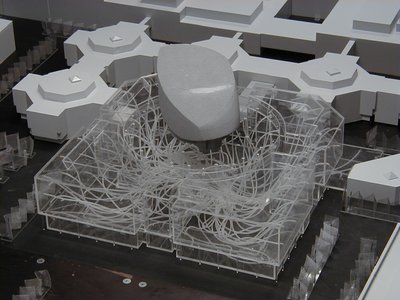Aerodynamics of Buildings
The building and environmental aerodynamics working group is dealing with fluid flow in the atmospheric boundary layer. Emphasis is given to the analysis of wind flow within the influence area of buildings and to the resulting wind loads on buildings and structures as well as to the study of the wind comfort and pollutant dispersion in urban areas.
The wind flow is simulated in a subscale model in a wind tunnel. The flow-induced wind forces are determined by means of pressure measurements. Both, the mean values and unsteady pressure measurements are made. The aim of the studies is to determine the static pressure distribution on the facade and to evaluate the affected area of maximum pressure and suction loads on individual components. Furthermore, the influence of the wind on air conditioning systems and solutions for fire protection are derived from pressure distribution measurements on the skin of buildings.
To assess the pedestrians comfort in the built environment in urban areas the wind speeds are examined to get information on expected wind comfort. Under consideration of the wind statistics, the expected wind conditions are determined in the full scale situation.
The dispersion of building-related emissions is simulated by using tracer gases and immission concentration measurements. The investigations include the proposition of release scenarios, the design of new power stations and industrial plants and the prediction of the environmental impact of emissions emanating from buildings.
